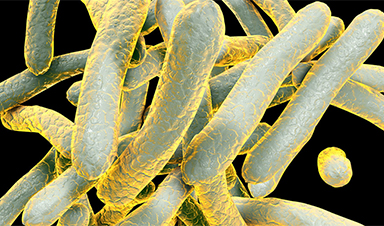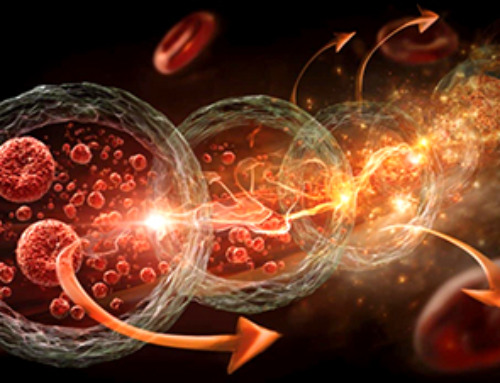In early June, at the invitation of the European Commission to Brussels (Belgium), I toured some fascinating AI and blockchain-based projects, which the Commission is funding. Across industrial sectors, from healthcare to energy, from construction to retail, engineers are creating new technologies with potentially disruptive implications for the current architectural order of the global economy. One of the technologies, an “AI doctor”, shows great promise for the future of healthcare in Africa.
The solution is called CareAi: an AI-powered computing system anchored on blockchain that can diagnose infectious diseases, such as malaria, typhoid fever, and tuberculosis, within seconds. The platform is engineered to serve the invisible demographic of migrants, ethnic minorities, and those unregistered within traditional healthcare systems. By bringing AI and blockchain together, CareAi uses an anonymous distributed healthcare architecture to deliver health services to patients anonymously. This makes it possible for these invisible cohorts to get access to basic healthcare, and useful contextual information without compromising their identities, for fear of deportation. This is important, as without access to health services, these communities might pose health risks to the wider population.
CareAi has three components, which include the machine, a finger prick, and a lab-on-a-chip — a mature technology that was originally pioneered by George Whitesides, a chemistry Professor at Harvard University. To use it, a finger is pricked for a drop of blood, and the blood is deposited onto the chip, which is then inserted into the machine. The blood sample is anonymized and then analyzed by the CareAi AI-based health assistant that references a vast array of medical and diagnosing libraries, dispensing advice with a corresponding rating of confidence. CareAi’s diagnosis is based on a statistical analysis of all of that data: if I see “A” in your blood and medical journals say that means you have malaria, CareAi can say whether you have malaria up to a certain confidence level. Based on the blood sample, the device would diagnose a disease where one exists. The outcome is delivered on the machine screen with a printout, providing confidence of analysis and further actions which may include prescriptions at participating pharmacies, or escalation for medical attention with NGO doctors who supply anonymous medical treatments.
Image Credit: KATERYNA/KONSCIENCE PHOTO LIBRARY/Getty Images
News This Week
AI matches doctors in mapping lung tumors for radiation therapy
In radiation therapy, precision can save lives. Oncologists must carefully map the size and location of a tumor before delivering high-dose radiation to destroy cancer cells while sparing healthy tissue. But this process, called [...]
Scientists Finally “See” Key Protein That Controls Inflammation
Researchers used advanced microscopy to uncover important protein structures. For the first time, two important protein structures in the human body are being visualized, thanks in part to cutting-edge technology at the University of [...]
AI tool detects 9 types of dementia from a single brain scan
Mayo Clinic researchers have developed a new artificial intelligence (AI) tool that helps clinicians identify brain activity patterns linked to nine types of dementia, including Alzheimer's disease, using a single, widely available scan—a transformative [...]
Is plastic packaging putting more than just food on your plate?
New research reveals that common food packaging and utensils can shed microscopic plastics into our food, prompting urgent calls for stricter testing and updated regulations to protect public health. Beyond microplastics: The analysis intentionally [...]
Aging Spreads Through the Bloodstream
Summary: New research reveals that aging isn’t just a local cellular process—it can spread throughout the body via the bloodstream. A redox-sensitive protein called ReHMGB1, secreted by senescent cells, was found to trigger aging features [...]
AI and nanomedicine find rare biomarkers for prostrate cancer and atherosclerosis
Imagine a stadium packed with 75,000 fans, all wearing green and white jerseys—except one person in a solid green shirt. Finding that person would be tough. That's how hard it is for scientists to [...]
Are Pesticides Breeding the Next Pandemic? Experts Warn of Fungal Superbugs
Fungicides used in agriculture have been linked to an increase in resistance to antifungal drugs in both humans and animals. Fungal infections are on the rise, and two UC Davis infectious disease experts, Dr. George Thompson [...]
Scientists Crack the 500-Million-Year-Old Code That Controls Your Immune System
A collaborative team from Penn Medicine and Penn Engineering has uncovered the mathematical principles behind a 500-million-year-old protein network that determines whether foreign materials are recognized as friend or foe. How does your body [...]
Team discovers how tiny parts of cells stay organized, new insights for blocking cancer growth
A team of international researchers led by scientists at City of Hope provides the most thorough account yet of an elusive target for cancer treatment. Published in Science Advances, the study suggests a complex signaling [...]
Nanomaterials in Ophthalmology: A Review
Eye diseases are becoming more common. In 2020, over 250 million people had mild vision problems, and 295 million experienced moderate to severe ocular conditions. In response, researchers are turning to nanotechnology and nanomaterials—tools that are transforming [...]
Natural Plant Extract Removes up to 90% of Microplastics From Water
Researchers found that natural polymers derived from okra and fenugreek are highly effective at removing microplastics from water. The same sticky substances that make okra slimy and give fenugreek its gel-like texture could help [...]
Instant coffee may damage your eyes, genetic study finds
A new genetic study shows that just one extra cup of instant coffee a day could significantly increase your risk of developing dry AMD, shedding fresh light on how our daily beverage choices may [...]
Nanoneedle patch offers painless alternative to traditional cancer biopsies
A patch containing tens of millions of microscopic nanoneedles could soon replace traditional biopsies, scientists have found. The patch offers a painless and less invasive alternative for millions of patients worldwide who undergo biopsies [...]
Small antibodies provide broad protection against SARS coronaviruses
Scientists have discovered a unique class of small antibodies that are strongly protective against a wide range of SARS coronaviruses, including SARS-CoV-1 and numerous early and recent SARS-CoV-2 variants. The unique antibodies target an [...]
Controlling This One Molecule Could Halt Alzheimer’s in Its Tracks
New research identifies the immune molecule STING as a driver of brain damage in Alzheimer’s. A new approach to Alzheimer’s disease has led to an exciting discovery that could help stop the devastating cognitive decline [...]
Cyborg tadpoles are helping us learn how brain development starts
How does our brain, which is capable of generating complex thoughts, actions and even self-reflection, grow out of essentially nothing? An experiment in tadpoles, in which an electronic implant was incorporated into a precursor [...]






















Leave A Comment